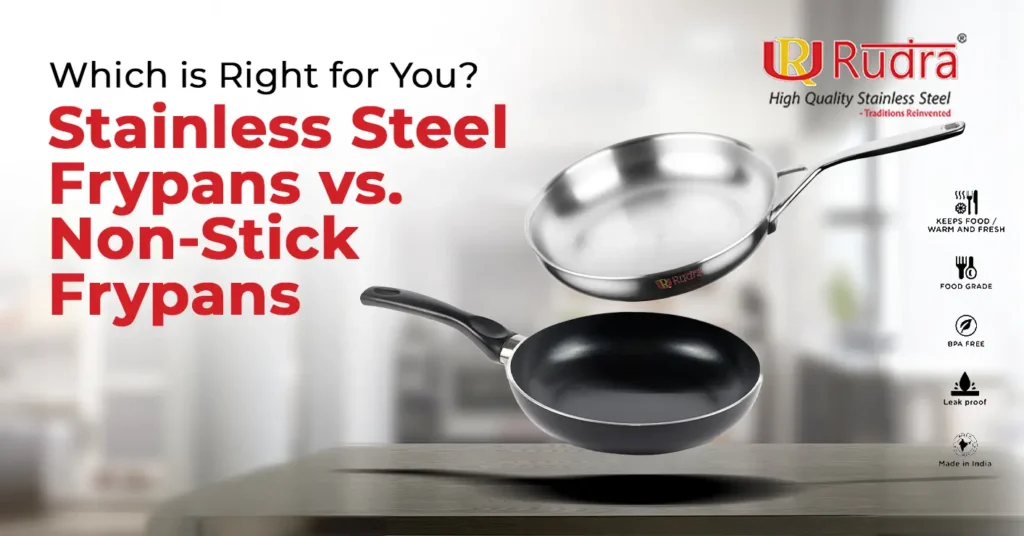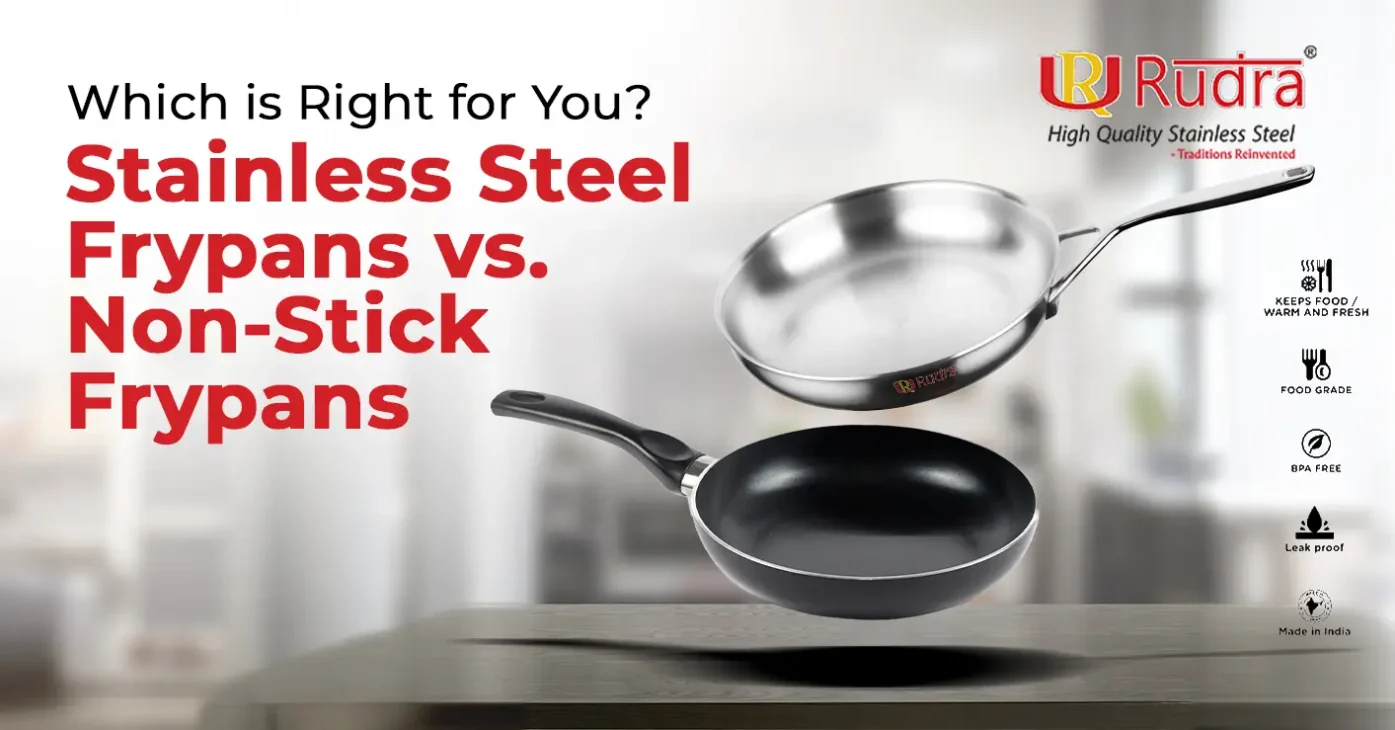Stainless Steel Frypans vs. Non-Stick Frypans: Which is Right for You?

In the realm of kitchen cookware, the debate between stainless steel frypans and non-stick frypans has long been a topic of discussion among home chefs and culinary enthusiasts. Both types of pans offer unique advantages and are suitable for different cooking needs. In this comprehensive guide, we’ll delve into the differences between stainless steel and non-stick frypans, explore their respective benefits and drawbacks, and help you determine which option is right for your kitchen.
Stainless Steel Frypans: Durability and Versatility
Stainless steel frypans are renowned for their durability, making them a favorite choice among professional chefs and home cooks alike. Here are some key advantages of stainless steel frypans:
-
Durability:
Stainless steel frypans are built to last, withstanding high temperatures and heavy use without warping or degrading over time. They are resistant to scratches, dents, and corrosion, making them ideal for long-term use in the kitchen.
-
Versatility:
Stainless steel frypans are incredibly versatile and can be used for a wide range of cooking methods, including searing, sautéing, frying, and even baking. They can be safely used in the oven, making them perfect for dishes that require both stovetop and oven cooking.
-
Even Heat Distribution:
Stainless steel frypans offer excellent heat conductivity, ensuring even heat distribution across the cooking surface. This allows for precise temperature control and uniform cooking results, essential for achieving perfect sears and caramelization.
-
Easy to Clean:
Stainless steel frypans are dishwasher safe and easy to clean by hand. They are non-reactive and do not retain flavors or odors from previous cooking, making them suitable for preparing a variety of dishes without imparting unwanted tastes.
Non-Stick Frypans: Convenience and Ease of Use
Non-stick frypans are prized for their convenience and user-friendly features, making them a popular choice for everyday cooking tasks. Here are some advantages of non-stick frypans:
-
Easy Food Release:
Non-stick frypans feature a special coating, typically made of polytetrafluoroethylene (PTFE) or ceramic, that prevents food from sticking to the cooking surface. This allows for easy food release and effortless cleanup, requiring minimal oil or fat for cooking.
-
Low-Fat Cooking:
Non-stick frypans require less oil or fat compared to stainless steel frypans, making them ideal for low-fat cooking and healthier meal preparation. They promote non-greasy cooking and are suitable for those watching their calorie intake.
-
Versatility:
Non-stick frypans are suitable for cooking delicate foods such as eggs, pancakes, and fish, where precise control over cooking temperature and gentle handling are essential. They are also convenient for cooking sticky or sugary ingredients, such as caramel or sauces, without the risk of burning or sticking.
-
Quick Cleanup:
Non-stick frypans are incredibly easy to clean, requiring only a simple wipe with a soft sponge or cloth to remove any residue. They are not dishwasher safe and should be hand washed with mild detergent and warm water to preserve the non-stick coating.
Conclusion
In conclusion, both stainless steel frypans and non-stick frypans offer distinct advantages and are suitable for different cooking preferences and requirements. If you prioritize durability, versatility, and long-term performance, stainless steel frypans are an excellent choice for your kitchen. However, if you value convenience, easy cleanup, and low-fat cooking, non-stick frypans may be more suitable for your needs.
For a wide selection of high-quality stainless steel and non-stick frypans, look no further than Rudra Kitchen. With our extensive range of cookware options and kitchen essentials, you’ll find everything you need to elevate your culinary creations. Visit Rudra Kitchen today and discover the perfect frypan for your cooking adventures!



